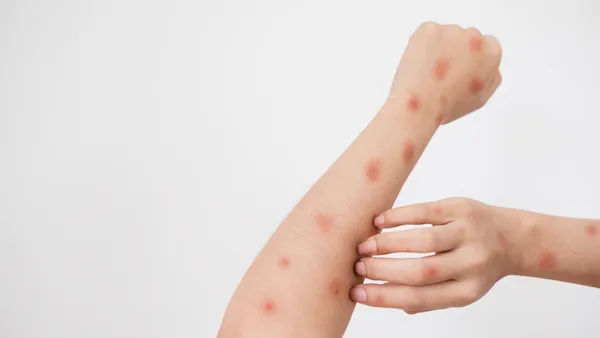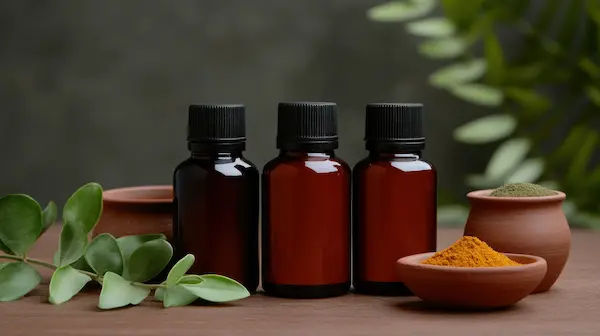First Aid Tips: Essential Emergency Care Steps for Accidents
Your simple first aid guide for accidents. Step-by-step emergency care for bleeding, burns, choking, CPR, and more, with clear steps until help arrives.


Introduction
Accidents can happen anywhere—at home, on the road, or at work. Knowing what to do in the first few minutes can protect someone’s life, limit complications, and support recovery. This first aid guide gives you clear, step-by-step emergency care actions for common injuries and sudden illnesses. With a little preparation and confidence, you can help keep a situation safe and stable until professionals arrive.
Note: This article offers general guidance and is not a substitute for certified first aid/CPR training or medical advice. Always follow local emergency instructions and the directions of healthcare professionals.
A simple first aid guide: what to do first?
- Check the scene: Make sure it’s safe for you to approach. Look for traffic, fire, electricity, chemicals, or other hazards. Don’t become a second victim.
- Call for help: If someone is seriously ill or injured, call your local emergency number (for example, 911 in the U.S.). If others are around, point to someone and ask them to call and get an AED (automated external defibrillator) if available.
Check responsiveness and breathing:
- Tap and shout: “Are you okay?”
- If unresponsive and not breathing normally, begin CPR and use an AED as soon as possible.
If breathing but not fully awake, place in the recovery position (on their side) and monitor. - Protect yourself: Use gloves or a barrier device if you have them. Wash hands as soon as possible.
- Focus on ABCs: Airway, Breathing, Circulation. Clear the airway, check breathing, and control severe bleeding.
Emergency care steps for common accidents
Severe bleeding
What to do:
- Call emergency services for heavy, spurting, or uncontrolled bleeding.
- Apply firm, direct pressure with a clean cloth or bandage until bleeding stops. Don’t remove soaked dressings; add more on top.
- If an object is embedded, do not remove it; apply pressure around it and stabilize the object.
- For life-threatening bleeding that doesn’t stop with direct pressure, and if you are trained and have proper equipment, apply a tourniquet 2–3 inches above the wound (not over a joint) and tighten until bleeding stops. Note the time applied. Do not remove it yourself.
- Watch for shock: Pale, cool, clammy skin; weakness; fast pulse; confusion. Lay the person flat, elevate legs 6–12 inches if no injury prevents it, keep warm, and call for help.
Choking (adults and children over 1 year)
- Signs: Inability to speak, cough, or breathe; clutching throat; silent cough; bluish lips or face.
- If they can cough forcefully, encourage coughing.
- If they cannot breathe or cough:
- Deliver 5 back blows between the shoulder blades with the heel of your hand, then 5 abdominal thrusts (the “Heimlich maneuver”). Repeat cycles until the object is expelled or the person becomes unresponsive.
- For pregnant or obese individuals, use chest thrusts instead of abdominal thrusts.
- If the person becomes unresponsive: Call emergency services, start CPR, and check the mouth for the object before giving rescue breaths.
- Infants under 1 year: Give 5 back slaps followed by 5 chest thrusts. Do not perform abdominal thrusts on infants.
CPR and AED basics
- For adults and teens who are unresponsive and not breathing normally:
- Hands-only CPR for untrained rescuers: Push hard and fast in the center of the chest at a rate of
- 100–120 compressions per minute, depth at least 2 inches (5 cm), allowing full chest recoil.
- If trained: Use 30 compressions and 2 rescue breaths. Resume compressions immediately after breaths.
- Use an AED as soon as it’s available: Turn it on, attach pads as shown, and follow voice prompts.
- For children and infants: Technique, rate, and depth differ; if trained, follow age-specific guidance. If not trained, perform hands-only CPR while awaiting help.
Consult a Top General Physician
Burns (thermal, chemical, and electrical)
Thermal burns:
- Remove the person from the heat source. Cool the burn under cool running water for up to 20 minutes as soon as possible. Do not use ice.
- Remove tight items (rings, watches) before swelling starts.
- Cover loosely with a sterile, nonstick dressing. Do not break blisters or apply butter/ointments initially.
- Seek medical care for large or deep burns, burns on the face, hands, feet, genitals, or major joints, or any burn in infants/older adults.
Chemical burns:
- Brush off dry chemicals with a gloved hand or cloth. Rinse the area with running water for at least 15 minutes. Remove contaminated clothing/jewelry while rinsing. Call emergency services and, if available, consult poison control.
Electrical burns:
- Do not touch the person until the power source is off. Call emergency services. Electrical injuries can cause internal damage—medical evaluation is needed.
Fractures and sprains
- Immobilize the injured area. Do not try to straighten a suspected fracture.
- Apply a splint if trained, padding both sides of the injury and immobilizing joints above and below.
- Use cold packs wrapped in a cloth for 15–20 minutes to reduce swelling.
- Seek medical care for obvious deformity, severe pain, inability to bear weight, numbness/tingling, or open fractures (cover with a clean dressing and control bleeding).
Head and neck injuries
- Warning signs needing urgent care: Loss of consciousness, repeated vomiting, severe or worsening headache, confusion, slurred speech, weakness, seizure, unusual drowsiness, unequal pupils, neck pain, or any high-impact injury.
- If you suspect a spine injury: Keep the head, neck, and spine aligned. Do not move the person unless there is immediate danger.
- For minor scalp bleeding: Apply gentle pressure with a clean cloth.
Seizures
- Protect from injury: Clear the area around the person. Cushion the head.
- Do not restrain. Do not place anything in the mouth.
- Time the seizure. Most end within 1–2 minutes.
- After the seizure, roll the person onto their side (recovery position), check breathing, and stay until fully alert.
- Call emergency services if the seizure lasts longer than 5 minutes, repeats, occurs in water, causes injury, is the person’s first seizure, or if the person is pregnant, has diabetes, or does not regain consciousness.
Allergic reactions and anaphylaxis
- Signs of anaphylaxis: Hives; swelling of lips, tongue, or throat; wheezing or trouble breathing; abdominal pain/vomiting; dizziness/fainting; sudden drop in blood pressure.
Action:
- Use an epinephrine auto-injector immediately, if available. Inject into the outer thigh through clothing if necessary.
- Call emergency services. Lay the person flat with legs raised if breathing allows. If symptoms persist and a second auto-injector is available, a second dose may be given after 5–15 minutes.
- Antihistamines can help hives but do not treat breathing problems. Use asthma inhalers only if prescribed for the person.
Poisoning and harmful exposures
- Ingested poisons: Do not induce vomiting. Rinse the mouth. Identify what was taken, when, and how much.
- Inhaled poisons: Move to fresh air.
- Skin exposures: Remove contaminated clothing and rinse skin with running water for at least 15 minutes.
- Eye exposures: Rinse the eye with clean, lukewarm water for at least 15 minutes, holding eyelids open and rolling the eye.
- Call your local poison control center for guidance. In the U.S., call Poison Help at 1-800-222-1222.
Heat illness
- Heat exhaustion: Heavy sweating, weakness, nausea, headache, dizziness.
- Move to a cool place, loosen clothing, apply cool, wet clothes, and sip cool water. If symptoms worsen or do not improve, seek medical care.
- Heat stroke (medical emergency): Confusion, fainting, very high body temperature, hot skin that may be dry or profusely sweating, seizures.
- Call emergency services. Begin rapid cooling: cool water on skin, ice packs at neck/armpits/groin, and fan the person. Do not delay cooling while waiting for help.
Hypothermia and frostbite
- Hypothermia: Shivering, confusion, slurred speech, drowsiness.
- Move to a warm place, remove wet clothing, warm the center of the body first (chest, neck, head, groin) with blankets or skin-to-skin contact. Handle gently. Call emergency services for moderate/severe cases.
- Frostbite: Numb, hard, pale or waxy skin.
- Rewarm in warm (not hot) water, about 37–39°C (99–102°F), for 15–30 minutes. Do not rub the area. Don’t thaw if refreezing is possible. Seek medical care.
Eye injuries
- Chemical splash: Rinse continuously with clean water or saline for at least 15 minutes. Remove contact lenses during rinsing. Seek urgent care.
- Penetrating injury: Do not remove the object or apply pressure. Stabilize with a protective shield (e.g., paper cup) and get emergency care.
Nosebleeds
- Sit upright and lean forward slightly. Pinch the soft part of the nose just below the bony bridge for 10–15 minutes without checking. Spit out blood; do not lean back.
- Seek care if bleeding lasts longer than 20 minutes, is heavy, or follows significant injury.
Dental injuries (knocked-out adult tooth)
- Handle the tooth by the crown (top), not the root. If dirty, gently rinse with clean water; do not scrub.
- If possible, reinsert into the socket and bite down gently on gauze.
- If not, place the tooth in milk, saline, or a tooth-preservation solution. Get dental care within 30 minutes if possible.
Shock (circulatory shock)
- Signs: Pale, cool, clammy skin; rapid pulse; rapid, shallow breathing; confusion; weakness; fainting.
- Lay the person flat, elevate legs 6–12 inches if no head, neck, back, or leg injury is suspected and if it’s comfortable.
- Keep warm, loosen tight clothing, do not give food or drink, and call emergency services.
Build a first aid kit that works
Keep a well-stocked kit at home, in your car, and at work. Consider:
- Adhesive bandages (multiple sizes), sterile gauze pads, roller bandages, adhesive tape
- Triangular bandage, elastic (ACE-type) wrap
- Antiseptic wipes, saline for wound/eye irrigation, antibiotic ointment
- Instant cold packs, burn dressing or clean nonstick pads
- Tweezers, small scissors, safety pins, digital thermometer
- Disposable gloves, breathing barrier (CPR face shield), eye protection
- Oral rehydration salts, antihistamines, pain reliever as advised
- Hydrocortisone cream, topical antiseptic
- Tourniquet and hemostatic gauze if trained to use
- Emergency blanket
- List of emergency contacts, medications, allergies, and medical conditions
- Epinephrine auto-injector and inhaler if prescribed
When to seek emergency care or call an ambulance?
Call your local emergency number right away if any of the following occur:
- Severe trouble breathing, blue/gray lips or face, or not breathing
- Unresponsiveness, seizure lasting more than 5 minutes, or repeated seizures
- Heavy, uncontrollable bleeding
- Signs of stroke (face droop, arm weakness, speech difficulty) or heart attack (chest pressure/pain with shortness of breath, sweating, nausea)
- Serious head, neck, or spine injury; major burns; electrical injury
- Suspected broken bones with deformity, open fractures, or severe pain
- Signs of anaphylaxis (throat swelling, trouble breathing, fainting)
- Signs of shock
Prepare ahead: take a class and make a plan
- Get trained: A certified first aid/CPR/AED course builds skills and confidence.
- Know your tools: Learn to use an AED and, if appropriate, a tourniquet and hemostatic gauze.
- Keep information handy: Post emergency numbers, your address, and entry instructions for responders.
- Practice your plan: Share your emergency plan with family or coworkers and review it regularly.
- Refresh skills: Renew certification as recommended; guidelines can change.
Consult a Top General Physician
Consult a Top General Physician

Dr. Rajib Ghose
General Physician/ Internal Medicine Specialist
26 Years • MBBS
Kolkata
B Ghose Foundation Doctor's Chamber, Kolkata
(50+ Patients)

Dr. Rohinipriyanka Reddy
General Practitioner
9 Years • MBBS
Hyderabad
Apollo 24|7 Clinic, Hyderabad

Dr. Chethan T L
General Physician/ Internal Medicine Specialist
5 Years • MBBS, MD, DNB (General Medicine)
Bengaluru
Apollo Medical Center, Marathahalli, Bengaluru

Dr. Rajib Ghose
General Physician/ Internal Medicine Specialist
25 Years • MBBS
East Midnapore
VIVEKANANDA SEBA SADAN, East Midnapore

Dr. Anupriya C
General Physician/ Internal Medicine Specialist
5 Years • MBBS, MD, General Medicine
Bengaluru
Apollo Clinic, JP nagar, Bengaluru
Consult a Top General Physician

Dr. Rajib Ghose
General Physician/ Internal Medicine Specialist
26 Years • MBBS
Kolkata
B Ghose Foundation Doctor's Chamber, Kolkata
(50+ Patients)

Dr. Rohinipriyanka Reddy
General Practitioner
9 Years • MBBS
Hyderabad
Apollo 24|7 Clinic, Hyderabad

Dr. Chethan T L
General Physician/ Internal Medicine Specialist
5 Years • MBBS, MD, DNB (General Medicine)
Bengaluru
Apollo Medical Center, Marathahalli, Bengaluru

Dr. Rajib Ghose
General Physician/ Internal Medicine Specialist
25 Years • MBBS
East Midnapore
VIVEKANANDA SEBA SADAN, East Midnapore

Dr. Anupriya C
General Physician/ Internal Medicine Specialist
5 Years • MBBS, MD, General Medicine
Bengaluru
Apollo Clinic, JP nagar, Bengaluru
More articles from General Medical Consultation
Frequently Asked Questions
What is the first thing I should do in any emergency?
Ensure the scene is safe for you, then check responsiveness and breathing. Call your local emergency number for serious injuries or if the person is unresponsive, and begin CPR if they are not breathing normally.
Should I drive someone to the hospital or call an ambulance?
Call an ambulance for life-threatening symptoms (severe breathing problems, uncontrolled bleeding, stroke or heart attack signs, major trauma, seizures lasting over 5 minutes). EMS can begin emergency care and transport safely.
How do I perform hands-only CPR?
If an adult or teen is unresponsive and not breathing normally, call emergency services. Place the heel of one hand in the center of the chest, other hand on top, and push hard and fast (100–120 per minute) at least 2 inches deep, allowing full recoil. Continue until help or an AED arrives.
When should I use a tourniquet?
Use a commercial tourniquet for life-threatening limb bleeding that does not stop with direct pressure. Place it 2–3 inches above the wound (not over joints), tighten until bleeding stops, and note the time. Seek immediate medical care.
What are the essentials for a home first aid kit?
Include bandages and sterile gauze, tape, antiseptic wipes, nonstick dressings, gloves, a CPR face shield, tweezers, scissors, instant cold packs, an emergency blanket, pain reliever as advised, antihistamines, and a list of emergency contacts and allergies.




